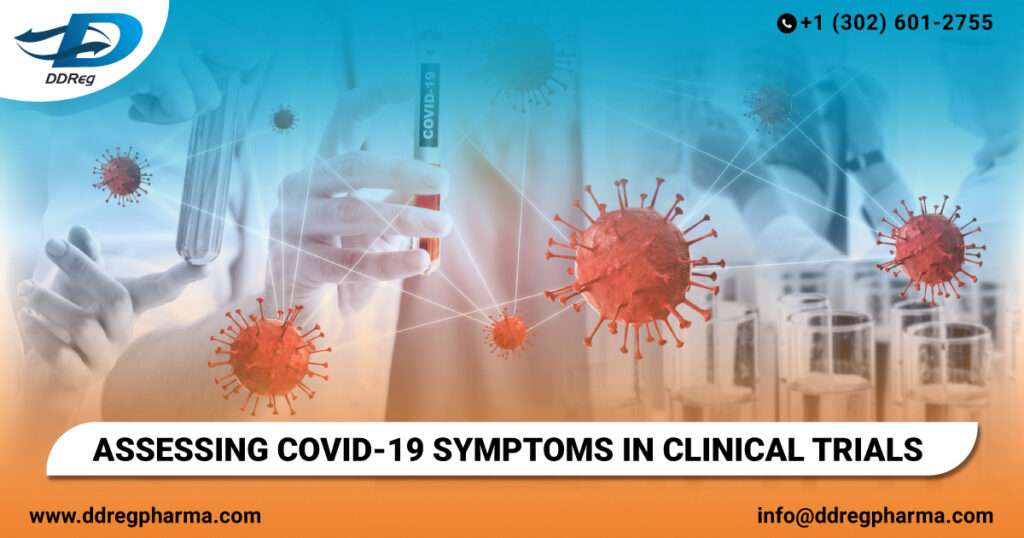The onset of the coronavirus, or COVID-19, created havoc across the globe since its emergence in December 2019 in Wuhan, China, and fast spreading potential. Though no longer considered a “public health emergency” (under section 319 of the Public Health Services Act), the virus and its new strains are still actively circulating. This requires rigorous clinical trials to evaluate drugs and biological products for its prevention and treatment.
Trial sponsors and investigators continue to carry out clinical trials for outpatient prevention or treatment for COVID-19. These are conducted in adult & adolescent populations that exhibit COVID-19 symptoms. However, many challenges exist with respect to the assessment of symptoms.
U.S. Food and Drug Administration (FDA) issued a guidance addressing the measurement and analysis of COVID-19-related symptoms in outpatient adult and adolescent subjects. To make the sponsors aware, the FDA issued recommendations directed to optimizing trial design and facilitate timely product development.
Challenges relating to COVID-19 symptoms.
With the ongoing clinical trials, challenges persist in assessing COVID-19 symptoms comprehensively and efficiently including identifying methods to assess the variance in symptoms across subjects, patient burden, or mishandling of data.
The Outpatient-based clinical trials are difficult to execute since they require the precise evaluation of a diverse range of symptoms with minimal disturbance to patients and guarantee that data is exhaustive. Consequently, common symptoms for daily assessments must be identified by the sponsors based on target population and mechanism of action (MoA) of the investigational product. The focus should be on prioritizing the most changing symptoms to facilitate efficient measurement strategies while reducing patient burden.
General Guidelines
The FDA guidance document on “Assessing COVID-19 Related Symptoms in Outpatient Adult and Adolescent Subjects in Clinical Trials of Drugs and Biological Products for COVID-19 Prevention or Treatment” provides sponsors and investigators with key considerations and several strategies for conducting clinical trials in outpatient settings to better evaluate symptoms. Some of these are as follows:
- The patient-reported outcome (PRO) instruments are advised for assessing COVID-19-related symptoms as they capture signs and symptoms best known by the patient.
- PRO assessments should be conducted at least every 24 hours with reminders to ensure timely completion.
- A set of common COVID-19-related symptoms should be included in daily assessments for all trial subjects, regardless of baseline symptoms.
- Depending on the duration of study and context of use, sponsors may consider transitioning to weekly assessments and incorporating a comprehensive set of symptoms at initial and final time points.
Key Symptoms Assessment for COVID-19
The guidance provides a structured approach for assessing key COVID-19-related symptoms, including severity ratings and response options. Sponsors are encouraged to design assessments based on trial specifics and emerging symptoms.
A Table consisting of 14 symptoms (items) given as an example follows specific guidelines (Table 1 on page 6 of the guidance document): Subjects assess the severity of symptoms (items 1 to 10, 13, and 14) based on their worst experience within a defined period (e.g., 24 hours) using a verbal scale. Vomiting (item 11) and diarrhea (item 12) are recorded after each episode. There’s no cumulative score; each symptom is individually scored: items 1 to 10 range from None (0) to Severe (3), while items 13 and 14 measure changes in smell or taste, ranging from usual (0) to no sense (2).
Outpatient Endpoint Selection
Clinical endpoints are outcome measures referring to occurrence of disease, symptom, sign, or laboratory abnormality constituting a target outcome in clinical research trials.
Firstly, Selection of endpoint should align with the time course of COVID-19 symptoms by considering their resolution patterns and potential rebound effects. Sponsors are urged to provide a rationale for selected endpoints based on literature and clinical trial data. For example, some symptoms like cough or changes in taste and smell might last longer than others. Moreover, there is an acknowledgement about COVID-19 rebound where symptoms may reoccur although with mild severity signifying how complicated the nature of infection is.
The Treatment trials should have endpoints such as persistent reduction or clearance of symptoms over a fixed period that can be measured using PRO instruments. Baseline severity of symptoms should be established by entry criteria for trials while aggregating symptom scores or use of area under curve measurements are not recommended due to diversity in the pattern of symptoms being addressed across different studies.
Sponsors conducting prevention studies want to see if prophylaxis reduces symptom severity compared with placebo group; therefore, common COVID-19-related symptoms should be included in data collection to effectively describe severity levels.
Conclusion
The guidance highlights the need for systematic symptom assessment in outpatient clinical trials for COVID-19 prevention and treatment. By using standardized assessments, taking advantage of PRO instruments, and considering factors specific to a trial, sponsors can improve the design of a study and contribute to expedited development of interventions that work against this disease outbreak.
In addition to regulatory and pharmacovigilance services for global customers, DDReg Pharma also offers expert clinical regulatory services to support with the Clinical Trial Applications. Reach out to the experts for more information. Read more from the experts about clinical trials here: Easing Requirements for Minimal Risk Clinical Trials.

